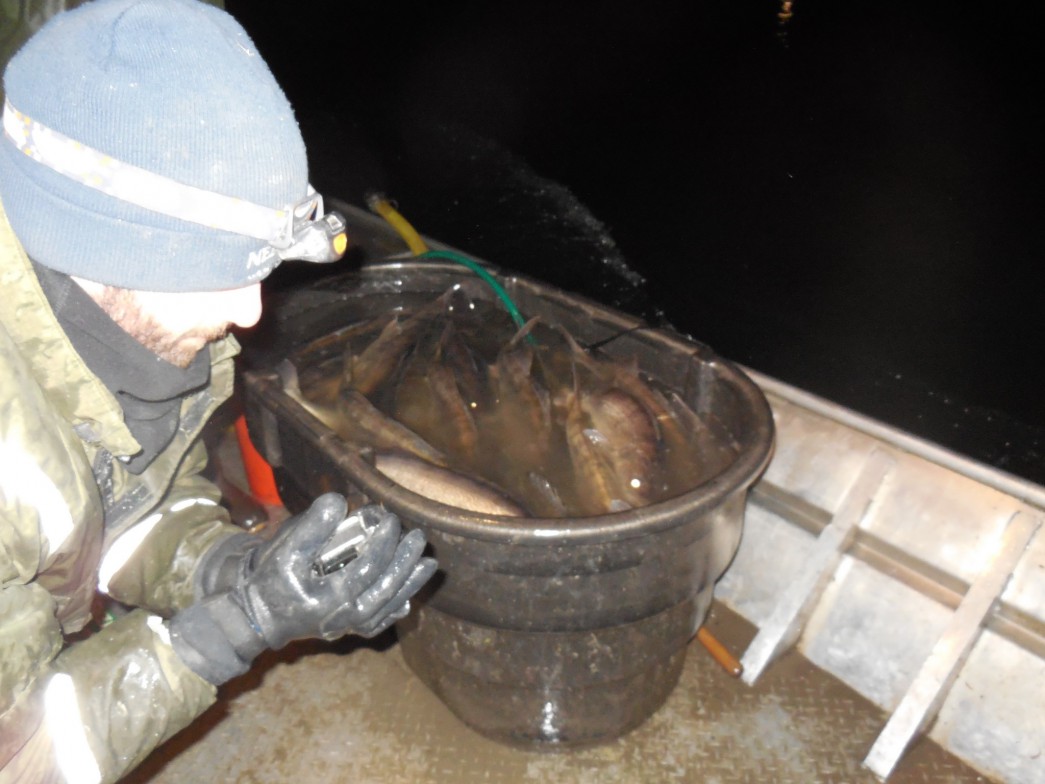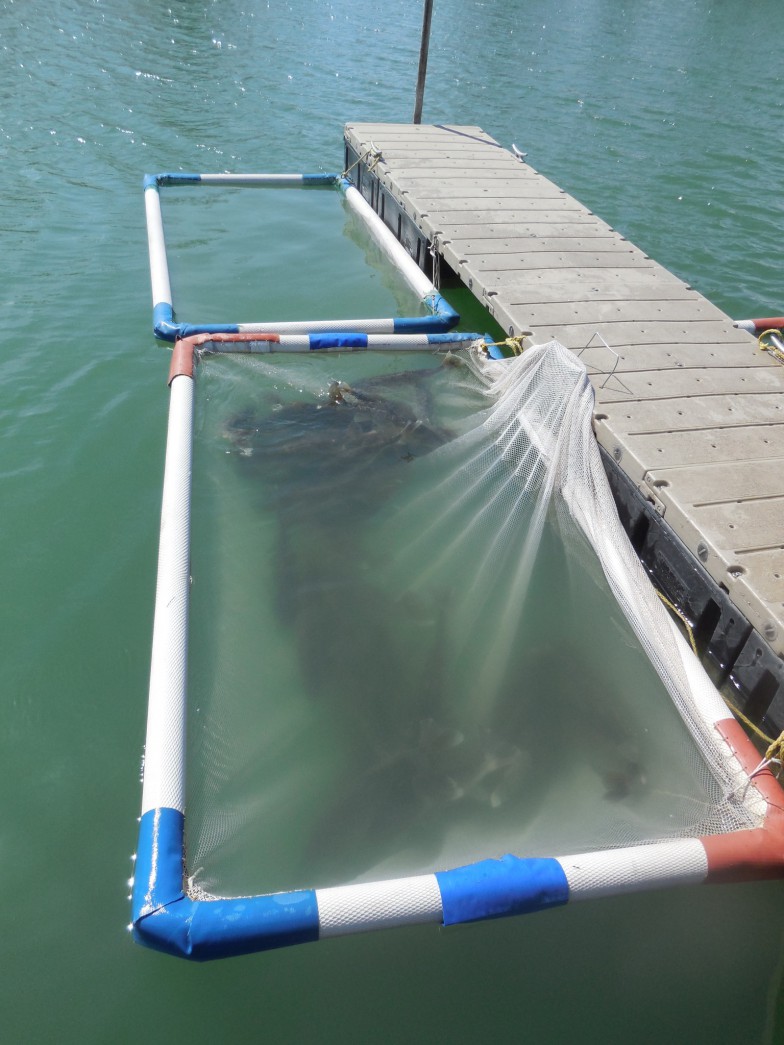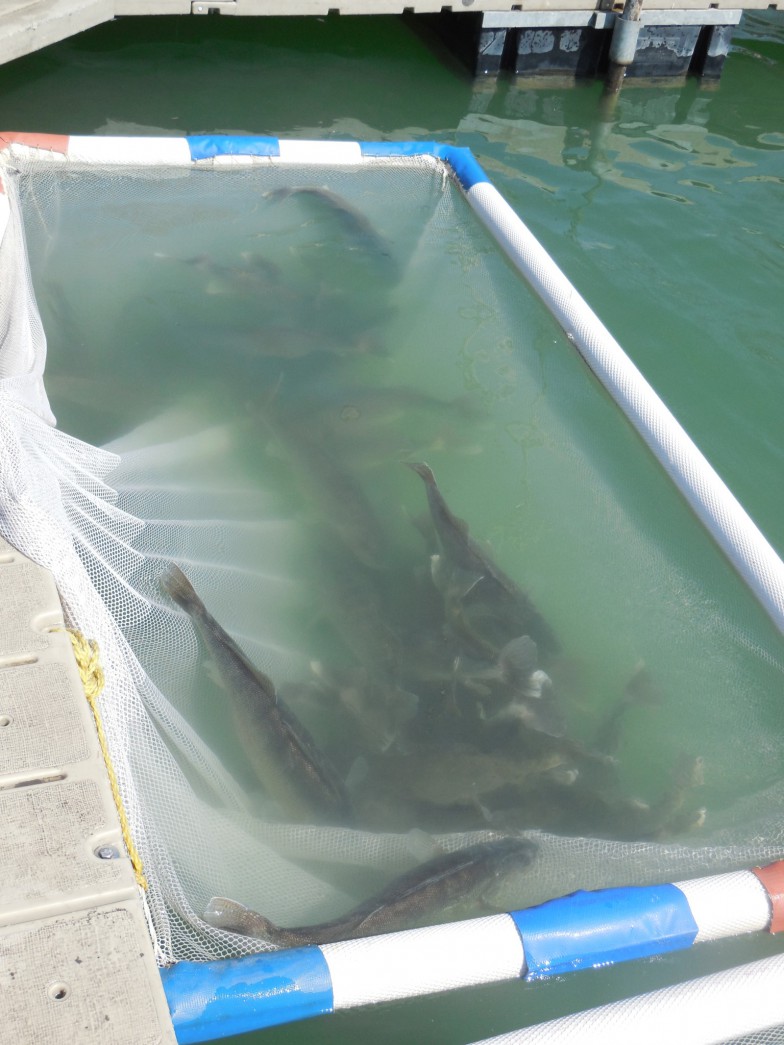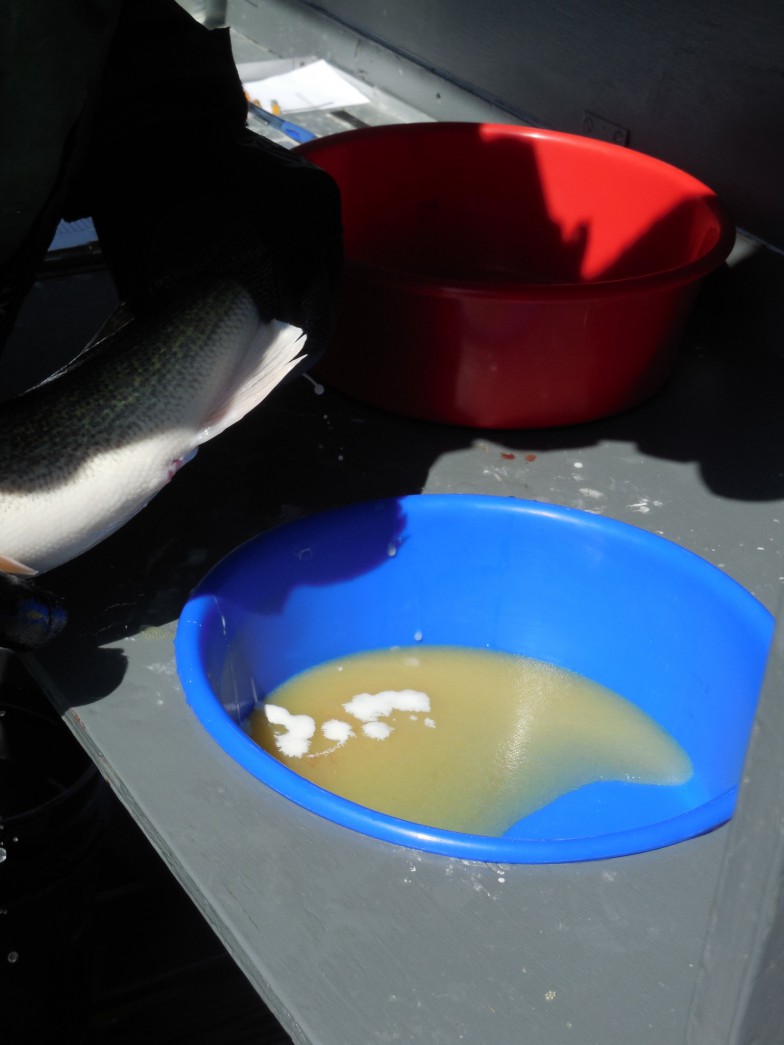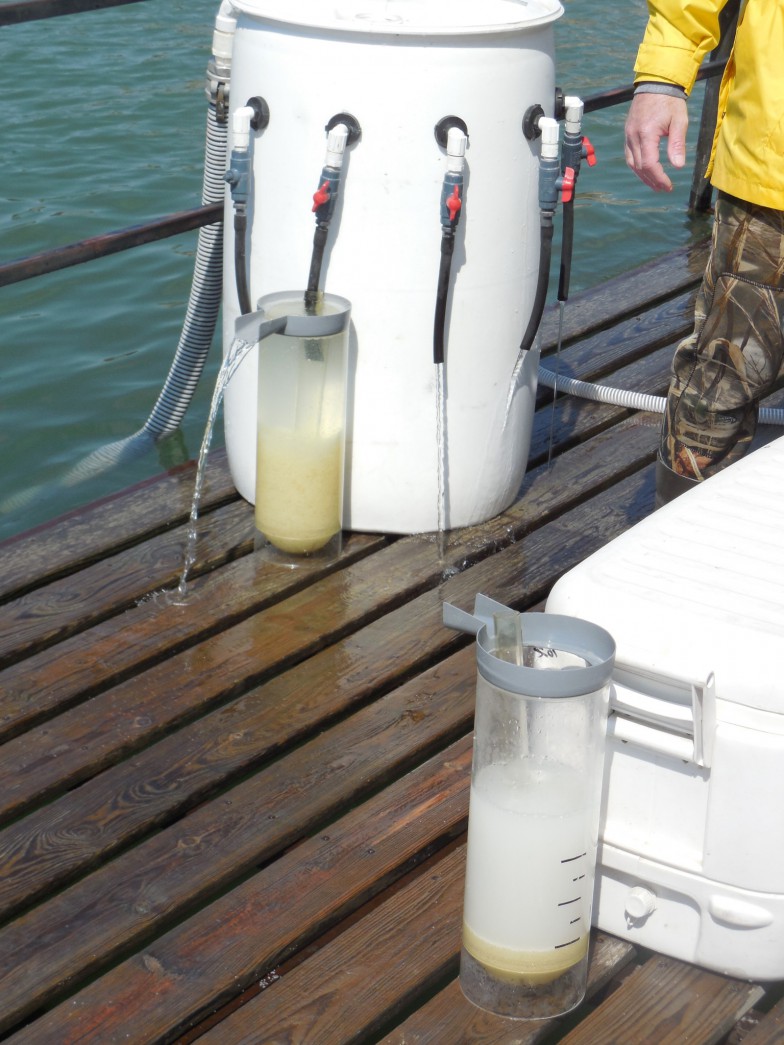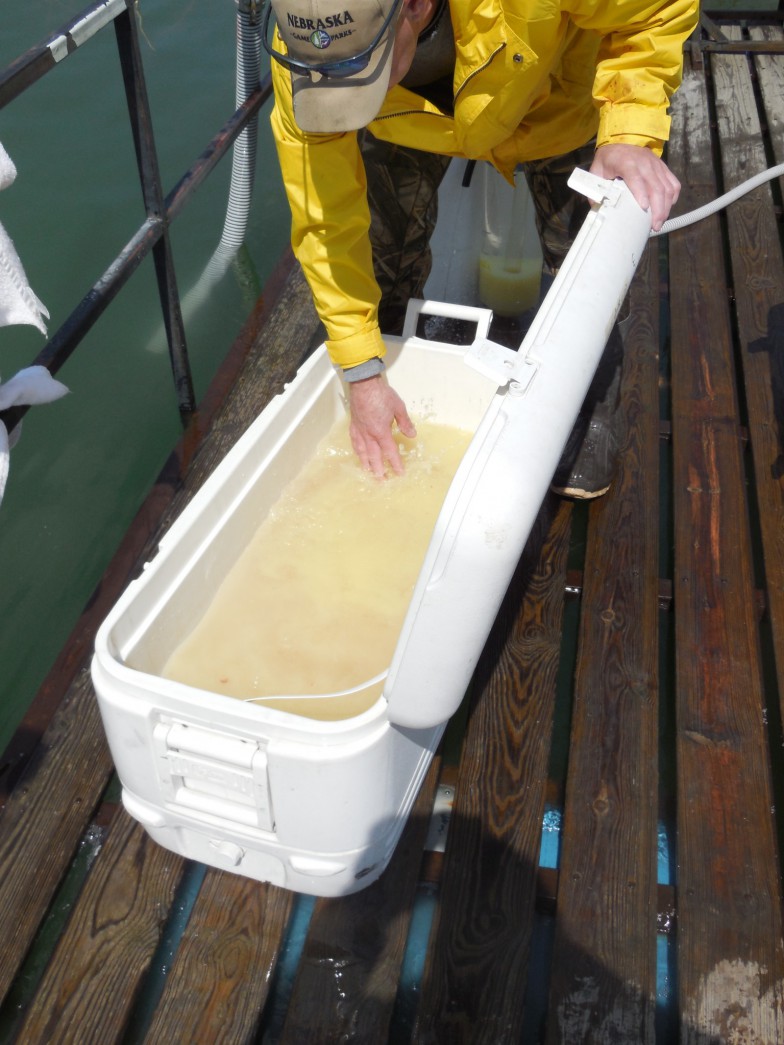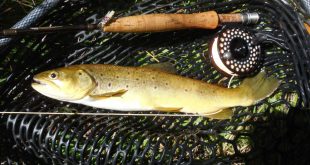It is that time of year again and Nebraska fisheries workers are on their annual Easter egg hunt–for walleye eggs. If you missed this, here is the official news release:
Game and Parks Commission to begin Walleye Egg Collection
LINCOLN — The Nebraska Game and Parks Commission plans to begin collecting adult, spawning walleyes in late March. The Commission plans to collect approximately 76 million eggs to meet the 2015 stocking requests.
Anglers should be aware that Game and Parks staff will begin collecting walleyes the night of March 30 at Sherman Reservoir, and they will need to avoid Commission boats and nets. Starting on April 1, a designated area along the dam will be closed to both bank anglers and boats after sunset. Based on the results of early collection efforts at Sherman Reservoir, crews will initiate efforts at Merritt Reservoir on or before April 6, and at Lake McConaughy on or before April 13.
Netting of walleyes will take place until the egg quota has been met. Gill netting along the dam at night will capture female walleyes, while an electroshocking boat will collect males. Spawning operations will take place on the lake during the mornings, and fertilized eggs will be transferred to Nebraska state fish hatcheries for hatching.
It is expected that crews will be off of Sherman Reservoir by April 5, Merritt Reservoir by April 12 and Lake McConaughy by April 17, depending on netting success and weather.
I know I “recycle” some of this material every year, but the truth is as the seasons change the same events occur in nature every year–we will be collecting walleye eggs every year around April 1. It is the cycle of life. So, you may have seen some of this before; if you have seen it already and do not want to again, go ahead and ignore it. If not, here is a video, it was filmed on Lake McConaughy in 2010, but it will give you a very good idea of what our crews will be doing in the coming weeks:
For some more details, and some explanation of what you see in the video, let me copy and paste some “stuff” from one of my blogs last spring:
Walleyes spawn mostly at night; to capture those spawners, we have crews that will work most of the night, especially when the spawning activity is intense. Female walleyes are captured in large-mesh gill nets set for about an hour at a time. When working on a night crew running those nets, it is pretty much get the fish in, get them untangled as quickly and carefully as possible, into the live well, and then a quick boat ride back to the dock to get the fish into the holding cribs. It is wet work, work, work under whatever conditions the weather happens to throw at you.
Male walleyes also are collected at night primarily by electro-fishing boat. Fish are “cribbed” in holding nets until the next morning. Males in one crib:
Big girls in another crib:
In the mornings additional Fisheries staff shows up to sort through the fish collected during the night and spawn those that are ready (i.e. “ripe”). Spawning is done in a pan, one female per pan, and then 3 males for each pan/female. There are more than enough sperm in a single drop of milt from one male walleye to fertilize every egg in a pan, but we want fertilization to be as high as possible so we use three males. I hope this picture is self-explanatory (if not, ask your parents about the “birds and the bees”).
Care is taken to keep the pan, the female, and males as dry as possible while eggs and milt are expressed. That seems odd, because, well, they are fish and they spawn in the water. However, our goal is the highest rate of fertilization possible, and that can be accomplished by keeping the eggs and milt dry, and then mixing them thoroughly. The 3rd primary feather from a 2-year old Tom turkey is critical for proper stirring and fertilization. Oh, the eggs are only stirred in a clockwise direction!
Once the eggs and milt are mixed, THEN water is added. Water activates the sperm. By keeping everything as dry as possible until the eggs and milt have been thoroughly mixed, we can get the highest rate of fertilization possible! Timeliness and distribution are key!
Once the “magic in the pan” is done, a slurry of clay is added to the walleye eggs. Again, that sounds like the worse possible thing that could be done to freshly fertilized walleye eggs, but there is a method to a pointy-headed fish biologist/fish culturist madness. The clay is very fine, “Fuller’s earth” or “diatomaceous earth” and those fine clay particles coat the walleye eggs and keep them from clumping together. If they clump they do not circulate properly, and then fungus starts growing and all sorts of bad things happen. Here is a jar full of walleye eggs on the right with the clay slurry, the jar on the left is being rinsed.
When rinsing is done, the eggs are put in large coolers to be hauled back to the hatchery. Here is what one of our “Easter baskets” will look like after a good morning!
Once the fertilized eggs are hauled back to the state fish hatcheries at Calamus, Valentine, or North Platte, they are jarred up in jars exactly like those pictured above. The walleye eggs roll, circulate, in those specially-made hatching jars for a period of days, usually around 10-14, depending on water temperatures, until they hatch. After that, a bunch of walleyes are stocked around the state as 4-day old fry, while others are raised in hatchery ponds until they are approximately 40 days old and 1-2 inches before they are stocked, or they are raised until they are 6-8-inches long and stocked in the fall.
This spring we have a goal of over 600 quarts of walleye eggs in order to produce over 35 million walleyes requested for stocking in over 50 Nebraska waters this year.
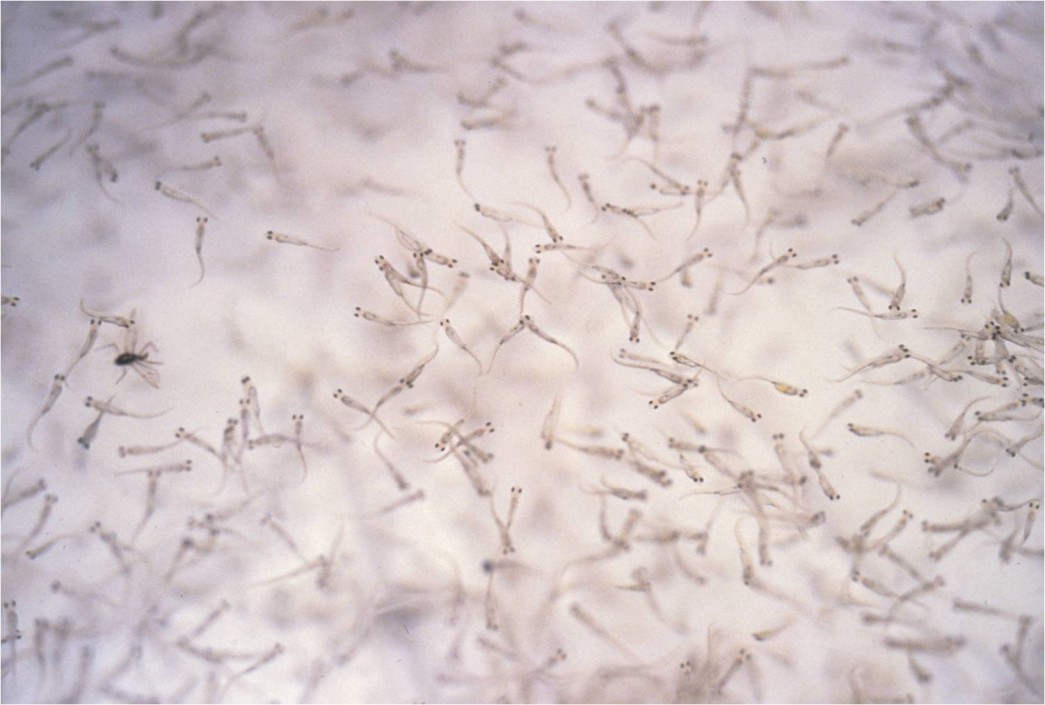
 Nebraskaland Magazine
Nebraskaland Magazine
